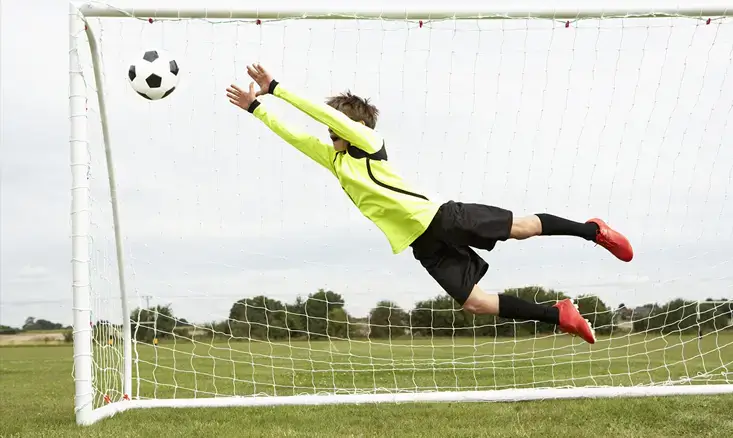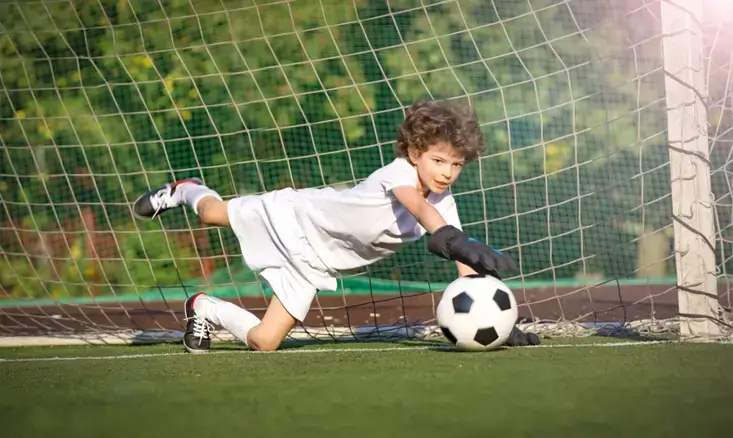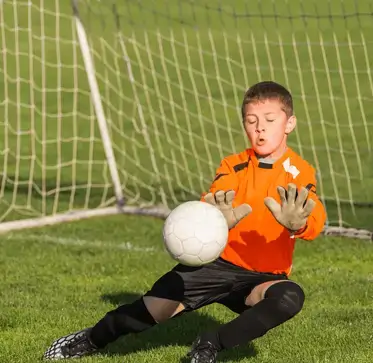CRFC BLOGS
LATEST BLOGS & NEWSLETTERS
A Comprehensive Guide to Youth Soccer Goalie Rules
In youth soccer, the goalkeeper plays a crucial role in defending their team’s goal. This position is unique because the goalie can use their hands, which no other player can do during a game. However, with these special privileges come specific rules that goalkeepers must follow. Whether you’re a player, coach, or parent, understanding these youth soccer goalie rules is essential for success on the field. This guide will break down everything you need to know about the role of a goalie, including rules about handling the ball, the penalty box, and what happens in specific situations like penalty kicks.
Youth Soccer Goalie Rules and Regulations
Youth soccer leagues often adjust the standard FIFA rules to make them easier and safer for younger players. These adjustments are designed to ensure fair play and foster learning. Here are some key youth soccer goalie rules you should know.
Basic Youth Soccer Goalie Rules
One Goalie Per Team
Each team is allowed only one goalkeeper on the field at a time. This player wears a different-colored jersey to make them easy to identify.
Goalie’s Role
The goalkeeper’s primary job is to prevent the opposing team from scoring by blocking or catching the ball. They are the only players allowed to use their hands and are only permitted within the penalty box.
Handling the Ball
One key rule for goalies is that they can handle the ball inside the penalty box but must follow specific guidelines, especially regarding how long they can hold onto it.
These youth soccer goalie rules and regulations are essential for young players and those coaching them as they establish the game’s basic structure. These must be part of youth soccer goalkeeping training.
Youth Soccer Goalie Rules on Handling the Ball
Only goalkeepers have the privilege of handling the ball, and there are specific rules about when and how they can use their hands.
Youth Soccer Goalie Pick-Up Ball Rule
A goalie can use their hands to pick up the ball, but only under certain conditions. First, they must be inside the penalty box. Second, they can only pick up the ball if it wasn’t passed by a teammate using their foot. If a teammate passes the ball back with their foot, the goalie must use their feet to control it. This is an important rule in soccer, and it ensures that teams can’t waste time by continuously passing the ball back to the goalie.
Youth Soccer Goalie Possession Rule
Once a goalie picks up the ball inside the penalty box, they have it. According to the youth soccer goalie possession rule, the goalie has only 6 seconds to release the ball by throwing or kicking it to a teammate. This prevents time-wasting and keeps the game moving. If the goalie holds onto the ball for longer than 6 seconds, the referee may award a free kick to the opposing team. Young goalkeepers must develop good habits early on and learn to distribute the ball quickly.

Youth Soccer Goalie Box Rules
The penalty box, also known as the goalie box, is the most important field area for a goalkeeper. This is where the goalie is allowed to use their hands, but there are still specific rules they must follow within this space.
Youth Soccer Goalie Inside the Box Rule
- The penalty box is the large rectangle in front of the goal. The goalkeeper can use their hands inside this area, but they need to be mindful of how long they hold the ball and how they distribute it. This is the essence of the youth soccer goalie box rules.
- Movement and Positioning: A goalie must stay inside this box if they want to use their hands. Once they step outside the box, they are considered an outfield player and can no longer handle the ball.
Awareness of their position inside the penalty box helps goalkeepers avoid serious mistakes, like handling the ball outside their designated area.
Youth Soccer Goalie Rules on Penalty Kicks
Penalty kicks are high-pressure situations, especially for goalies. Here’s how the youth soccer goalie rules on penalty kicks work.
- Staying on the Line: During a penalty kick, the goalie must stand on the goal line. They are allowed to move side to side along the line, but they cannot step forward or backward until the ball is kicked.
- Saving Penalty Kicks: If the goalie moves off the line before the ball is kicked, the referee can ask for the penalty to be retaken. This rule applies in all youth soccer leagues, including U8, U10, and U12.
Youth Soccer Goalie Rules for Different Age Groups
As children grow and develop their soccer skills, the rules change slightly to match their abilities. Here are the youth soccer goalie rules for different age groups.
U8 Soccer Goalie Rules
Learning the Basics
For young players in the U8 age group, the focus is on learning the basics of goalkeeping. The fields are smaller, and the games are generally less competitive, so the rules are more relaxed.
Handling and Kicking
U8 soccer goalie rules encourage goalies to use their hands and practice basic skills, such as throwing and kicking the ball to their teammates.
U10 Soccer Goalie Rules
More Advanced Skills
When players reach the U10 age group, the rules become more structured. Goalies need to be more aware of the 6-second rule for holding the ball and the restrictions on picking up a back-pass from a teammate.
Penalty Box Play
The U10 soccer goalie rules require goalkeepers to be mindful of their positioning inside the penalty box, where they can use their hands.
U12 Soccer Goalie Rules
Handling More Pressure
At the U12 level, goalies start to face more competitive games. They must manage the ball with their hands and feet while following the same rules regarding possession and movement in the penalty area.
Penalty Kicks
At this stage, the rules for defending penalty kicks become more important. U12 soccer goalie rules focus on goalies maintaining their position on the line and reacting quickly to shots.

Indoor Youth Soccer Goalie Rules
Indoor soccer differs slightly from outdoor soccer, but many basic rules remain the same. However, the smaller fields and walls add unique challenges for goalkeepers.
Handling the Ball
The same rules apply to handling the ball in indoor soccer. The goalie must be inside the penalty box to use their hands and is still limited to the 6-second rule for holding the ball.
Walls as Boundaries
In indoor soccer, the walls act as boundaries. The ball can bounce off them, which means goalies need to stay alert to rapid changes in ball direction.
Playing as a goalkeeper in indoor soccer requires quick reflexes and good positioning since the ball tends to move faster in a smaller space.
Youth Soccer Goalie Safety and Obstruction Rules
-
Youth Soccer Goalie Obstruction Rule
Protecting the Goalie

Conclusion
Youth soccer goalkeepers have a unique and important role on the field. By understanding the youth soccer goalie rules, young players can enjoy the game safely while developing their skills. From handling the ball to defending penalty kicks, these rules ensure that the game is fair for all players.
FAQs
Can a youth soccer goalie pick up the ball if a teammate passes it to them?
No, the goalie cannot pick up the ball if a teammate deliberately passes it to them using their foot. In this case, the goalie must use their feet to play the ball. This is to prevent time-wasting and to encourage active play.
How long can a youth soccer goalie hold the ball before releasing it?
A youth soccer goalie can hold the ball for up to 6 seconds. After that, they must throw or kick the ball to continue playing. Holding the ball for longer than 6 seconds may result in a free kick for the opposing team.
What are the rules for a youth soccer goalie during penalty kicks?
During a penalty kick, the goalie must stay on the goal line until the ball is kicked. They can move side to side along the line but cannot move forward or backward before the ball is kicked.
What happens if an opposing player obstructs a goalie in youth soccer?
If an opposing player obstructs a goalie, it is considered a foul. The referee will stop the play, and the goalie’s team will receive a free kick. This rule helps protect goalkeepers from unnecessary contact.
Are the rules different for indoor youth soccer goalies compared to outdoor soccer?
The basic rules for indoor youth soccer goalies are the same, but the game moves faster due to the smaller field size. Goalies must also be aware that the walls act as boundaries, which can change how the ball moves.

Did you find this useful?


